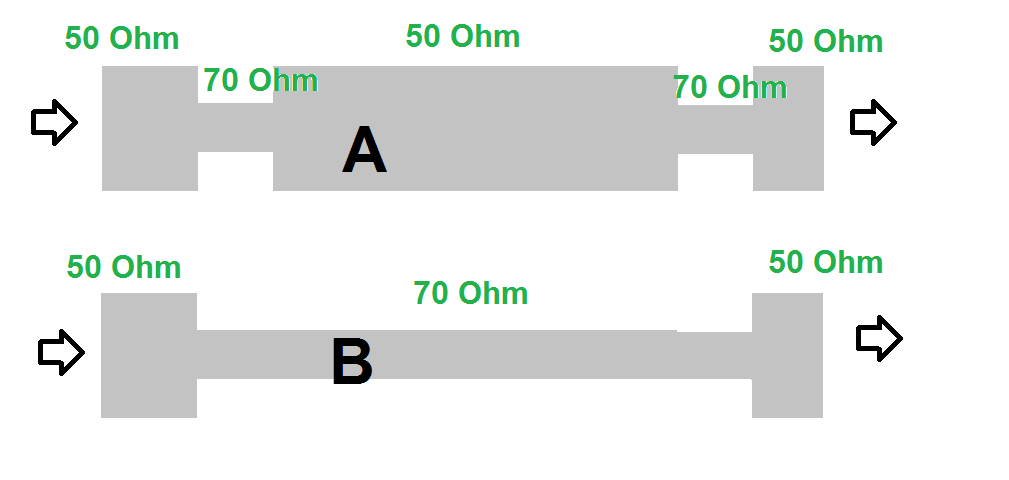which type of impedance discontinuity is worse (picture)?
Basically, if there is a discontinuity, for example an RF switch connector, does that become a major concern or is its impact negligible because it only exists in such a small portion of the transmission line? Or is it that anytime impedance changes, there is a reflection, so it doesn't matter at all if the discontinuity is long or short?

Where the discontinuity occurs, physically, determines the TIMING of the reflection. You'll need to analyze your specific signal to determine the impact on your system.
A is better, and the longer the lines, the moreso A would look better.
That is really what I thought, but you can probably see why this is confusing to me. Let's look at light as an example, and perhaps I'm comparing apples with oranges.
A standard window with 2 panes, doesn't it technically reflect more light than if the window was the same thickness but one solid piece of glass?
On the other hand, a fiber optic has two very narrow slits cut through the material, I would imagine the light would have an easier time bridging the thin gaps, as opposed to one long gap.
I guess the way to look at it is that each segment in a transmission line has parallel capacitance (maybe inductance) and series inductance (maybe capacitance). These would technically add up over the length of the line. Perhaps in a really nice transmission line, these will cancel out, so that it doesn't matter how long the line is, it will always look purely resistive. In this case if there is some kind of imbalance, it will really depend on how much distance the imbalance applies to, as it will be adding up.
For instance if I have a tiny little RF connector on the transmission line, let's say it has a bit more parallel capacitance but because it only persists for such a small distance, it will be a wash.
From what I've learned is that if there is any impedance change, you WILL get a reflection. I never learned about if it matters how brief this change is.
If I look at any glass, I can see some reflection, well what if we make the glass thinner and thinner, perhaps there is a point where the reflection vanishes right?
I doubt a glass pane that is a few atoms/molecules thick would still create a reflection (in theory of course).
So it most likely must depend on the wavelength.
I could go on forever, I have so many questions it's crazy :)
To complete the comparison, you need to make the glass thinner than light wavelength, and you'll see that "entry" reflection is partly cancelled by the "exit" reflection. It's a simple geometrical relation that can be calculated.
Similarly, if you record reflection factor or VSWR versus frequency for your TL discontinuities, you'll see how the reflection decreases with discontinuity length respectively with increasing wavelength.
discontinuity impedance picture 相关文章:
- Output Impedance Of a Triple cascode
- How to make image impedance equal
- Input and output impedance matching in Distributed amplifier
- Characteristic impedance of combination of CPWG and stripline on inner layers
- Problem of impedance matching of Gilbert cell mixer
- Input impedance of transmission lines connected in cascade
